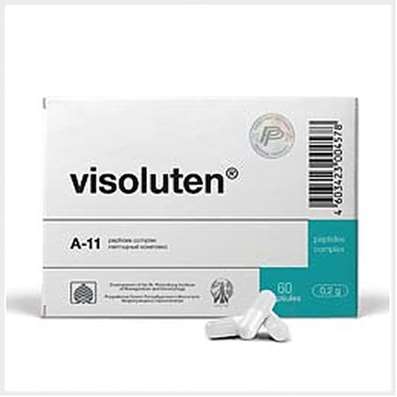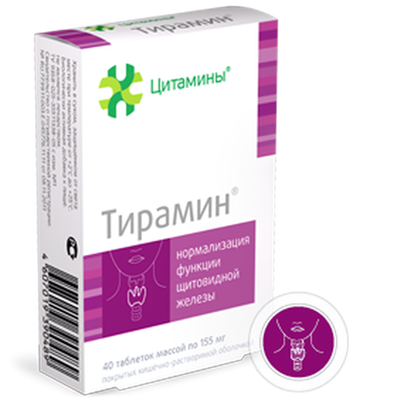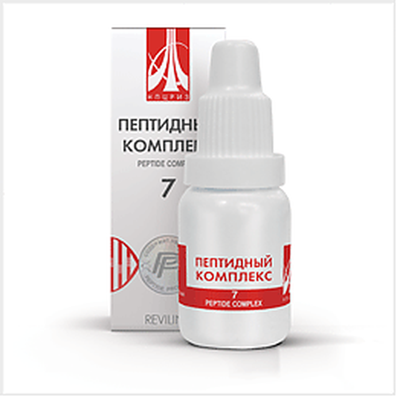Instruction for use: Aspinat plus
I want this, give me price
Active substance Acetylsalicylic acid + Caffeine
Dosage form
Pills
Composition
One tablet contains:
active substances:
Acetylsalicylic acid - 500 mg;
caffeine 50 mg;
Excipients:
lactose monohydrate 35 mg,
corn starch - 84 mg,
povidone - 10 mg,
stearic acid 7 mg,
crospovidone - 14 mg.
Description of dosage form
Tablets white or white with a yellowish or kremovatym color shade, flat-cylindrical, with a facet and a risk.
Pharmacological group
Analgesic combined (non-steroidal anti-inflammatory drug + psychostimulating agent).
Pharmacodynamics
Combined drug, the effect of which is determined by the components that make up its composition. The combination of the components of the drug provides better tolerability of the symptoms of malaise and fever in "cold" and other infectious and inflammatory diseases, reducing the pain syndrome of various origins. Acetylsalicylic acid has an anti-inflammatory, analgesic and antipyretic effect associated with the suppression of cyclooxygenase-1 and -2, regulating the synthesis of prostaglandins. As a result, prostaglandins are not formed, which provide the formation of edema and hyperalgesia. Reduction of the content of prostaglandins (predominantly E1) in the center of thermoregulation leads to a decrease in body temperature due to the expansion of the vessels of the skin and increased sweating. The analgesic effect is due to both central and peripheral action. Reduces aggregation, platelet adhesiveness and thrombus formation by suppressing the synthesis of thromboxane A2 in platelets. Antiaggregant effect persists for 7 days after a single dose (more pronounced in men than in women).
Caffeine increases the reflex excitability of the spinal cord, excites the respiratory and vasomotor centers, dilates the blood vessels of skeletal muscles, brain, heart, kidneys, reduces platelet aggregation, reduces drowsiness and fatigue, increases mental and physical performance.
Pharmacokinetics
Acetylsalicylic acid during the absorption is systemically eliminated in the intestinal wall and in the liver (deacetylated). The absorbed part is rapidly hydrolyzed by plasma cholinesterases and albumin esterase, therefore the half-life period (T1 / 2) is no more than 15-20 minutes. In the body it circulates (75-90% in association with albumin) and is distributed in tissues as an anion of salicylic acid. The maximum concentration (C m ax) of salicylic acid is reached after about 2 hours. Easily penetrates into many tissues and body fluids including in cerebrospinal fluid, peritoneal and synovial fluid. Penetration into the joint cavity is accelerated in the presence of hyperemia and edema and slows down in the proliferative phase of inflammation. In small amounts, salicylates are found in the nervous tissue, traces in bile, sweat, feces. When acidosis occurs, most of the salicylate is converted to a non-ionized acid that penetrates well into the tissue, including the brain. Rapidly passes through the placenta, in small quantities is excreted in breast milk. Metabolized mainly in the liver with the formation of 4 metabolites, found in many tissues and urine. It is excreted mainly by active secretion in the renal tubules in the form of salicylic acid proper (60%) and its metabolites. Removal of unchanged salicylate depends on the pH of the urine (with alkalization of urine ionization of salicylates increases, their reabsorption worsens and the excretion increases significantly). The rate of excretion depends on the dose: when taking small doses of T1 / 2 - 2-3 hours, with an increase in the dose may increase to 15-30 hours.
Absorption of caffeine occurs mainly due to simple diffusion. Cmax - is reached approximately in 50-75 minutes after intake. Quickly distributed in all organs and tissues of the body; easily penetrates the blood-brain barrier and the placenta. Communication with blood proteins (albumins) is 25-36%. Metabolized mainly in the liver. In adults, about 80% of the dose of caffeine is metabolized to paraxanthin, about 10% to theobromine and about 4% to theophylline. These compounds are subsequently demethylated into monomethylxanthines, and then to methylated derivatives of uric acid. T1 / 2 in adults - 3.9 - 5.3 hours (sometimes up to 10 hours). The excretion of caffeine and its metabolites is carried out by the kidneys.
Indications
Moderately or mildly expressed pain syndrome of various origins (headache, toothache, migraine, neuralgia, arthralgia, lumbago, radicular syndrome, muscle pain, menstruation pains).
The raised temperature of a body at cold and other infectious-inflammatory diseases (at adults and children is more senior 15 years).
Contraindications
hypersensitivity to acetylsalicylic acid, other non-steroidal anti-inflammatory drugs (NSAIDs), xanthines and other components of the drug;
erosive and ulcerative lesions of the gastrointestinal tract (in the phase of exacerbation);
gastrointestinal bleeding;
hemophilia, hemorrhagic diathesis, hypoprothrombinemia;
The bronchial asthma, induced by the intake of salicylates and other NSAIDs;
complete or incomplete combination of bronchial asthma, recurrent nasal polyposis and paranasal sinuses and intolerance to acetylsalicylic acid;
organic diseases of the cardiovascular system (including acute myocardial infarction, atherosclerosis, exfoliating aortic aneurysm);
arterial hypertension, portal hypertension;
glaucoma;
kidney failure;
anxiety disorders, increased excitability, sleep disturbance;
lactose intolerance, lactase deficiency, glucose-galactose malabsorption;
simultaneous reception with methotrexate in a dose of more than 15 mg per week;
children under 6 years with pain syndrome (for this dosage form);
children and adolescents under the age of 15 years (when used as an antipyretic) with acute respiratory infections caused by viral infections, due to the risk of developing Reye's syndrome (encephalopathy and acute fatty liver disease with acute liver failure).
pregnancy (I and III trimester);
lactation period.
Carefully
With caution appoint for gout, hyperuricemia, tk. Acetylsalicylic acid in small doses can provoke a gout attack in patients with predispositions to developing gout (with reduced excretion of uric acid from the body).
Care should be taken when there is a history of ulcerative lesions of the gastrointestinal tract (GIT), gastrointestinal bleeding, renal and hepatic insufficiency. Also, care should be taken with vitamin K deficiency and glucose-6-phosphate dehydrogenase deficiency.
Simultaneous intake of acetylsalicylic acid with methotrexate in doses less than 15 mg per week can lead to an increased incidence of side effects from the organs of hematopoiesis.
The use of acetylsalicylic acid can cause bronchospasm in patients with bronchial asthma, hay fever, polyposis of the nasal mucosa, chronic diseases of the respiratory tract, allergic reactions to other medicines.
It should be borne in mind that with simultaneous use with acetylsalicylic acid, the action of heparin and indirect anticoagulants is enhanced.
Caution should be exercised for persons with epilepsy and who are prone to seizures, in view of the fact that caffeine reduces the protective effect of antiepileptic medicines.
pregnancy and lactation
Has a teratogenic effect: when applied in the first trimester of pregnancy leads to the fetal cleavage of the upper palate, in the third trimester - causes inhibition of labor (suppression of prostaglandin synthesis), premature closure of the arterial duct in the fetus, hyperplasia of pulmonary vessels and hypertension in the small circulation. Reception of the drug in the II trimester is possible if the potential benefit to the mother exceeds the risk to the fetus.
Salicylates and their metabolites penetrate into breast milk in small amounts, breastfeeding should be stopped for the duration of treatment.
Dosing and Administration
Inside. To reduce the irritant effect on the GIT, the drug should be taken after meals, washed down with water, milk, alkaline mineral water.
For treatment of pain and increased body temperature adults and children over 15 years of 1-2 tablets; maximum single dose of 2 tablets; the maximum daily dose of 6 tablets.
For the treatment of pain, except for conditions in acute respiratory infections caused by viral infections (risk of developing Reye's syndrome), children aged 6 to 12 years, 1/2 tablet, 12 to 15 years, 1/2-1 tablet.
If necessary, take a single dose 3-4 times a day with an interval of at least 4 hours. The duration of treatment (without consulting a doctor) should not exceed 7 days when prescribed as an anesthetic and 3 days - as an antipyretic.
Side effects
From the gastrointestinal tract:
nausea, decreased appetite, gastralgia, diarrhea.
On the part of the hematopoiesis system:
thrombocytopenia, anemia, and leukopenia.
Allergic reactions:
skin rash, angioedema, bronchospasm.
From the central nervous system:
insomnia.
From the cardiovascular system:
tachycardia, increased blood pressure.
Other:
impaired liver and / or kidney function; Reye syndrome (encephalopathy and acute fatty liver dystrophy with rapid development of liver failure).
With prolonged use, the following can occur:
dizziness, headache, vomiting, erosive and ulcerative lesions of the digestive tract, hypocoagulation, bleeding (including in the digestive tract), visual impairment, decreased ear aches, tinnitus, bronchospasm, interstitial nephritis, prerenal azotemia with hypercreatinemia and hypercalcemia, papillary necrosis, acute renal failure, nephrotic syndrome, aseptic meningitis, increased symptoms of chronic heart failure, edema, increased activity of "liver" transaminases.
When such symptoms appear, it is recommended to stop taking the drug and immediately consult a doctor.
Overdose
Symptoms of overdose due to acetylsalicylic acid may occur after a single dose of a large dose or with prolonged use. If a single dose is less than 150 mg / kg, acute poisoning is considered easy, 150-300 mg / kg - moderate and when applied at doses greater than 300 mg / kg - severe.
Symptoms:
With easy poisoning - salicylism syndrome (nausea, vomiting, tinnitus, visual impairment, dizziness, severe headache, general malaise, fever - a poor prognostic sign in adults).
With a significant overdose - confusion, drowsiness, convulsions and coma, tremor, non-cardiogenic pulmonary edema, shortness of breath, suffocation, water-electrolyte imbalance, renal failure, collapse and shock.
The greatest risk of developing chronic intoxication is observed in the elderly with more than 100 mg / kg / day for several days. In children and elderly patients, the initial signs of salicylism are not always noticeable, so it is advisable to periodically determine the salicylate content in the blood: a concentration above 70 mg% indicates moderate or severe poisoning; above 100 mg% - about extremely severe, prognostically unfavorable. With moderate and severe poisoning, hospitalization is necessary.
Treatment:
Provocation of vomiting, the appointment of activated charcoal and laxatives, urine alkalinization (shown at a salicylate concentration above 40 mg%, is provided by intravenous infusion of sodium bicarbonate - 88 meq per 1 liter of 5% dextrose solution, at a rate of 10-15 ml / kg / h) , restoration of the volume of circulating blood and induction of diuresis (achieved by adding sodium bicarbonate solution in the same dose and dilution, repeat 2-3 times); it should be borne in mind that intensive fluid infusion of the elderly can lead to pulmonary edema. It is not recommended the use of acetazolamide for urine alkalinization (can cause acidosis and enhance the toxic effect of salicylates). Hemodialysis is indicated at a salicylate concentration of more than 100-130 mg%, and in patients with chronic poisoning - 40 mg% and lower in the presence of indications (refractory acidosis, progressive deterioration, severe central nervous system damage, pulmonary edema and kidney failure). With pulmonary edema, artificial ventilation of the lungs with a mixture enriched with oxygen is shown in the positive pressure mode at the end of the exhalation; To treat edema of the brain, hyperventilation and osmotic diuresis are used.
Caffeine in doses of more than 300 mg / day (including against the abuse of coffee - more than 4 cups of natural coffee, 150 ml) can cause, anxiety, tremor, headache, pain, confusion, extrasystole. Treatment: Provoking vomiting, taking activated charcoal.
Interaction
Acetylsalicylic acid increases the toxicity of methotrexate, reducing its renal clearance, the effects of narcotic analgesics, other NSAIDs, oral hypoglycemic drugs, heparin, indirect anticoagulants, thrombolytic agents and antiplatelet agents; reduces the effect of uricosuric medicines (benzbromarone, sulfinpyrazone), antihypertensive drugs, diuretics (spironolactone, furosemide); increases the concentration of digoxin, barbiturates, lithium salts in plasma. Glucocorticosteroids, ethanol and ethanol-containing drugs increase the negative effect on the gastrointestinal mucosa and increase the risk of developing gastrointestinal bleeding. Antatsida containing magnesium and / or aluminum, slow down and worsen the absorption of acetylsalicylic acid. Myelotoxic drugs increase the manifestation of hematotoxicity of the drug.
Caffeine reduces the effect of narcotic analgesics and hypnotic drugs, reduces the absorption of Ca2 + preparations in the digestive tract, increases the excretion of 1L + drugs in urine, accelerates absorption and enhances the action of cardiac glycosides, and increases their toxicity. Joint use of caffeine with beta-blockers can lead to mutual suppression of therapeutic effects. Mexiletine - reduces caffeine withdrawal to 50%; nicotine - increases the rate of caffeine withdrawal.
special instructions
Before surgical intervention to reduce bleeding during surgery and in the postoperative period, you should cancel taking the drug for 5-7 days and inform the doctor.
It should be borne in mind that in predisposed patients, acetylsalicylic acid (even in small doses) reduces the excretion of uric acid from the body and can lead to the development of an acute attack of gout.
During treatment, you should stop using alcohol (increased risk of gastrointestinal bleeding).
Excessive consumption of caffeinated products (coffee, tea) on the background of treatment can cause symptoms of an overdose of caffeine.
Form of issue
Tablets 500 mg + 50 mg.
For 10 tablets in a contoured cell pack of a PVC film or PVC / PVDC and aluminum foil printed lacquered.
1 circuit cell pack together with the instruction for use is placed in a pack of cardboard.
Storage conditions
In the original packaging at a temperature of no higher than 25 ° C.
Keep out of the reach of children.
Shelf life
2 years.
Do not use after the expiration date printed on the package.
Conditions of leave from pharmacies
Without recipe.

 Cart
Cart





